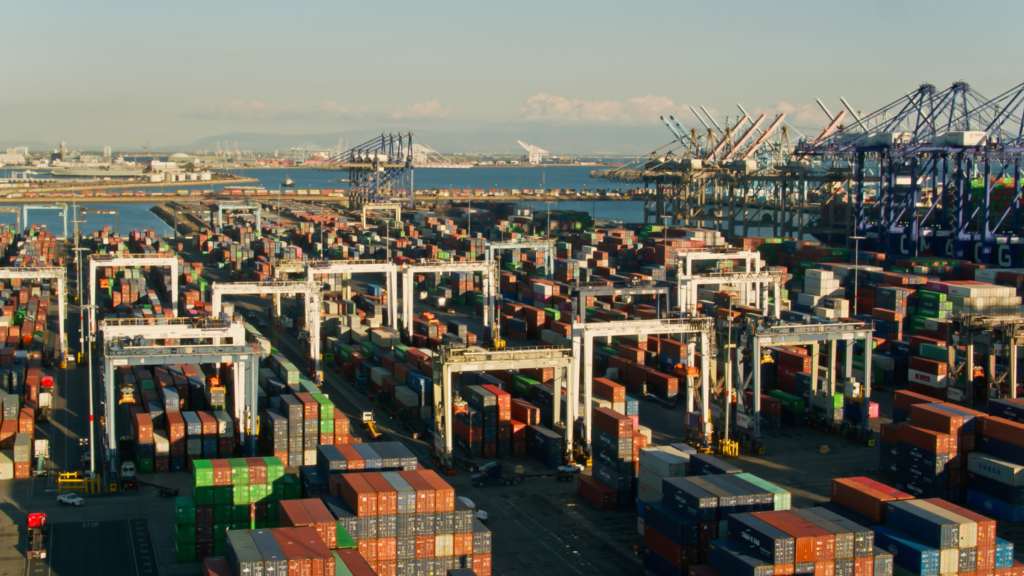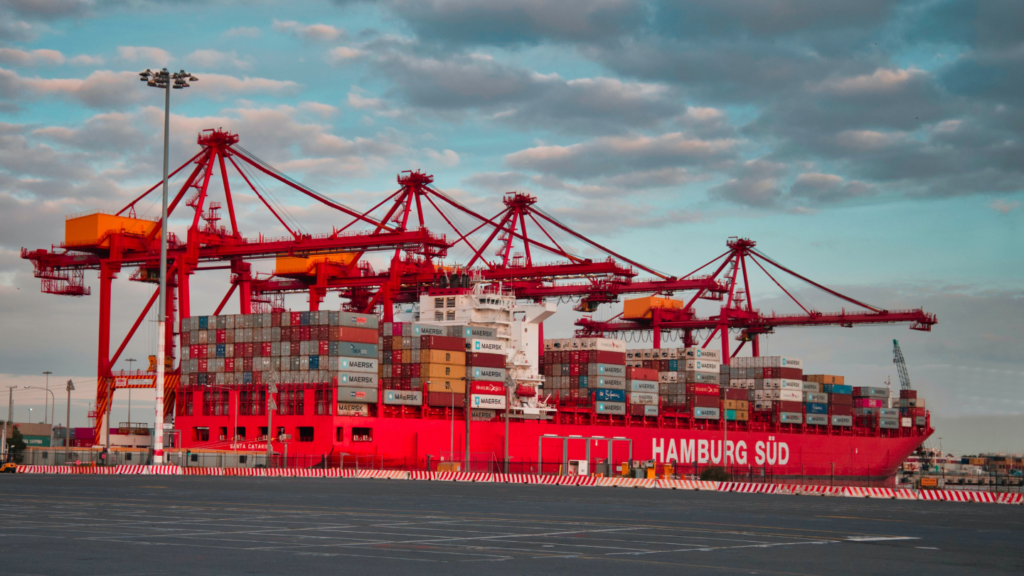Diversified Trade, Slowing Declines, Port of LA Prepared, and Near 10M Fine.
Your weekly All-Ways round-up of supply chain news.

Imports, Exports, and Everything in Between
In April, imports to the US increased by 1.5% or $4.8 billion to a seasonally adjusted $323.6 billion. This number truly reflects any changes in demand and price as US trade figures are measured in dollars and aren’t inflation-adjusted.
The gain was mainly driven by the import of automotive vehicles and parts, industrial supplies like non-monetary gold and metal products, cell phones, and other household goods.
Crude oil and natural gas imports decreased. Services did too including transportation and travel.
In April, there was a 3.6% decline in exports or $249 billion, mainly caused by industrial-supply shipments, including crude oil. The export of consumer goods fell too, including fewer shipments of pharmaceutical drugs, diamonds, and jewelry. On the other hand, more soybeans, rice, and frozen fruit juices were exported by the US. There was a slight increase in exports of services.
Overall, the US imported more goods and services than it exported as reflected in the goods-and-services trade deficit of $74.6 billion in April compared with $60.6 billion in March. The deficit in March was the smallest since September 2020.
The Commerce Department reported that the goods-and-services deficit through April of this year shrank 23.9% from 2022.
“We get these massive movements in the trade gap,” said Stephen Stanley, chief U.S. economist at Santander U.S. Capital Markets. “There is still left-over disruption from the pandemic.
It’s Going Down
Trade to the US from China declined again. China sent 15.4% of its exported goods to the US for the 12 months ended in April. That’s the lowest it’s been since October 2006!
The US has been working hard to become less reliant on China. With tariffs imposed on thousands of goods from China by the Trump administration and upheld by the Biden administration, it seems like Europe, Mexico, and alternative Asian countries have benefitted from the shift in sourcing. For the goods imports for the 12 months ended in April, India, Japan, and Vietnam amongst 25 other Asian and South Asian countries accounted for 24.7%.
Will China recover from COVID? Following an 8.5% rise in April, their export numbers fell 7.5% in May from the same time last year, raising concern.
On a Global Level
As the pandemic dwindled away, interest rates were raised by the Federal Reserve and other central banks, and global consumer spending shifted to services highlighting the softening of global goods trade this year.
According to the Organization for Economic Cooperation and Development, trade worldwide is set to grow by 1.6% this year, a big gap from the 5% increase recorded in 2022.
“Our forecast for trade in the short-term is quite weak,” said Clare Lombardelli, OECD chief economist. “The biggest driver of trade is the level of economic growth.”
The organization estimates that the global economy will grow by 2.7% this year, down from last year's 3.3%. Trade is expected to increase by 3.8% in 2024 bringing global growth to 2.9%.
Slowing Down
Don’t worry, it’s a good thing!
The rate of US imports declining is set to slow down in the coming months as shippers are expected to start bringing in back-to-school supplies and seasonal products.
According to the National Retail Federation (NRF), US container import is set to drop more than 20% in the first half of 2023 compared to the same period last year. The Global Port Tracker (GPT) guesstimated a decline of 23% for May and 15% for June. This would equal a total of 10.5 million TEUs of imports for the first half of 2023, down 22.3% from 2022.
“Decline in container import demand is...at odds with continuous growth in consumer demand,” said Ben Hackett, founder of Hackett Associates which compiles the GPT.
So what’s at the root of this? Low unemployment and rising pay.
Low Growth
Nonetheless, The Department of Commerce reported the lowest year-on-year growth in retail sales in the last three years at 1.08% for March.
Although retailers are sitting on the largest amounts of inventories in comparison to sales since March 2020, the GBT expects growth for the third quarter. With an estimated 5.96 million TEUs of container imports, it would only be a 7.8% decrease from the same period last year.
“Cargo volume is lower than last year, but retailers are entering the busiest shipping season of the year bringing in holiday merchandise,” said Jonathan Gold, vice president of NRF.
Wrap it Up
But with the uncertainties on the West Coast ports because of the ongoing labor negotiations, Gold wants the Biden Administration to step in to finalize a contract to mitigate unnecessary delays during peak season.
“The last thing retailers and other shippers need is ongoing disruption at the ports,” Gold said. “We’ve had enough unavoidable supply chain issues the past two years. This is not the time for one that can be avoided.”
Daydreaming?
Who’s daydreaming most?
The Biden administration? The ILWU and The PMA? The Port of Los Angeles?
With the ILWU and PMA negotiations underway since May 2022 and the contract of 22,000 dockworkers expiring July 1, 2022, you’d think we’d be nearing the end.
But while there were previously predictions of a happy ending in the near future, those dreams have been slashed by disagreements over wages.
The ILWU is failing to dispatch workers which is causing disruptions to ports all along the West Coast. This meant that 8 container ships were backed up and as many as 31 vessels scheduled to arrive in the next week were delayed a day or two. This can have an adverse effect on not just the US’s supply chain but on other places along the ship’s route as well.
“Basically every container vessel is having their schedule pushed back by about a day or two,” said Richard Palmer of the Marine Exchange of Southern California.
With the longest labor strife since 2015 for the West Coast, the port of LA seems confident in its ability to safely and efficiently handle an influx of ships come peak season, even with potential labor disruptions.
Protocol from the pandemic is still in place so the port deems it unlikely to see the same gridlock and air pollution as seen in the heat of COVID.
“We anticipate that container ships will not cram into our waters and will follow the new queuing system for labor protocols once again as they did before,” Kip Louttit, executive director of the Marine Exchange of Southern California, wrote in an email. “We dealt with 55 ships anchored plus 62 loitering in our waters once before and can do it again.”
In the meantime, President Joe Biden wishes to respect the collective bargaining process. As the authority that has the power to prevent an economy-crippling port strike, the White House will avoid intervention and wants both parties to keep negotiating until an agreement is reached.
FMC Fines Hamburg Sud
In the largest fine to date levied by the FMC since the ocean shipping reform last year, Hamburg Sud was ordered to pay nearly $10 million to OJ Commerce (OJC).
The Florida-based importer of home goods initially filed a complaint with the FMC against the carrier in November 2021 for improperly charging demurrage fees on 15 containers. Hamburg Sud refunded the full $40,680 to OJC.
While that should’ve been the end of the story, Hamburg Sud which is now owned by Maersk, allegedly failed to fulfill the minimum contract order for the 2020-21 contract. Hamburg Sud then allegedly refused to renew or negotiate a new contract with the retailer because of the potential risk of litigation, leaving them no time to find a new carrier for 2021-22.
Even though Hamburg Sud refuted the claims, FMC chief administrative law judge Erin Wirth found ample evidence for both claims.
In her order, Wirth said “Commission case law is clear that an ocean common carrier does not have a duty to grant a contract to every potential party. However, long-standing Commission precedent prohibits common carriers from shutting out any person for reasons having no relation to legitimate transportation-related factors and from retaliating against shippers.”
While OJC sought $100 million in reparations, Wirth calculated the 15 containers and the lost contract and valued it at $4.6 million in actual injury based on trade routes and volume. But because she deemed that “the violation was knowing and willful”, the amount was more than doubled to a total fine of $9.8 million.
The FMC has 30 days to review the ruling.




